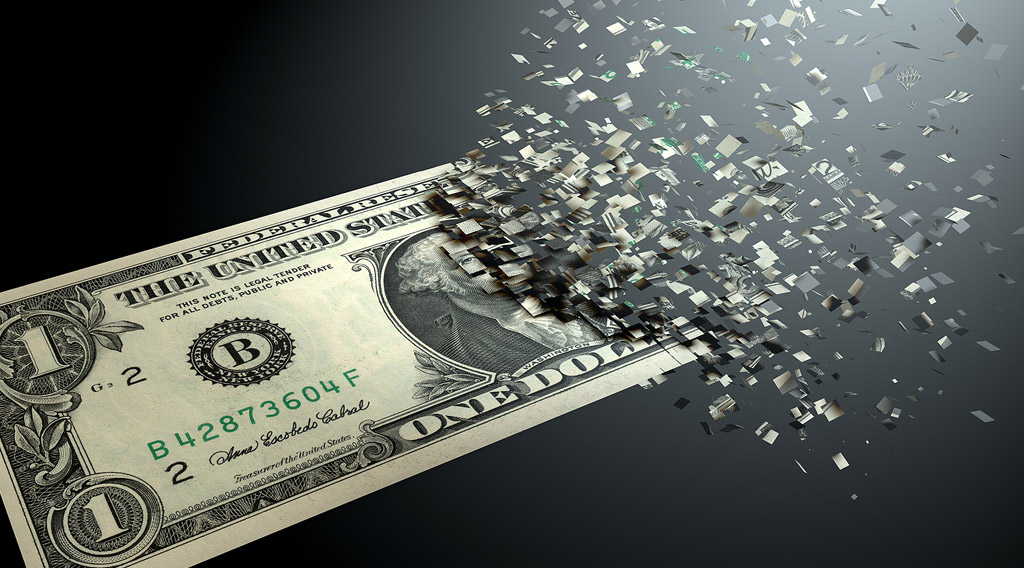 The trend of de-dollarization is gaining steam as global powers successfully limit their reliance on the US dollar in favor of local currencies. A study by the Brookings Institute highlights four major weaknesses threatening the dollar’s leading status including the dollar’s weaponization, national debt, the decreasing cost of currency exchange, and central bank digital currency development. At the same time, central banks are building a strong economic foundation with gold to support their shift away from the dollar.
The trend of de-dollarization is gaining steam as global powers successfully limit their reliance on the US dollar in favor of local currencies. A study by the Brookings Institute highlights four major weaknesses threatening the dollar’s leading status including the dollar’s weaponization, national debt, the decreasing cost of currency exchange, and central bank digital currency development. At the same time, central banks are building a strong economic foundation with gold to support their shift away from the dollar.
The Numbers
- The U.S. dollar’s share of global reserves fell to 59% in early 2024, down from 71% in 1999.
- Non-traditional currencies account for 11% of global reserves, up from 2% in 1999.
- China uses the yuan to settle about 50% of its cross-border trade and investment.
- Yuan usage in cross-border payments with China increased from 0% to 20% between 2014 and 2021.
- Central bank gold demand broke records in 2022, 2023, and H1 of 2024.
Why Investors Should Care
As the world reserve currency, the greenback enjoys steady demand, relative stability, and long-term strength. These characteristics confer many advantages for American investors, including strong buying power, more stable savings, and a more reliable foundation for investments. However, the rise of de-dollarization is eroding these economic advantages as dollar demand wanes. The impending threat of currency devaluation and inflationary pressures are causing an exodus from traditional, dollar-backed investments into safe-haven assets as investors seek wealth preservation.
What’s Behind the News?
Brookings identified four primary challenges to the dollar’s reign in the world economy:
- Economic Sanctions – The dollar’s weaponization through Western sanctions makes many countries wary of depending on it, especially China and Russia.
- National Debt – The $35 national debt burden and the rising cost of paying it back calls the dollar’s stability and strength into question.
- Exchange Technology – The dollar’s role as an exchange mechanism is challenged as technological improvements make it easier and safer than ever to exchange currencies.
- CBDC – The USD risks falling behind foreign currencies which can advance through the adoption of CBDCs, decreasing reliance on the dollar.
Expert Insights
Researchers at the Brookings Institute warn that “the dollar could be dethroned” if immediate actions aren’t taken to slow the pace of de-dollarization.
The US-based think tank highlights America’s “capricious” and “unilateral” application of sanctions, suggesting the dollar’s weaponization could contribute to its downfall.
Researchers further stress the negative impact of national debt and governmental gridlock, saying “Further political instability could erode investor confidence in the dollar.”
Pointing to key advancements in currency-exchange technology, the group points out “[C]onverting…currencies to dollars, and vice versa, has been easier and cheaper than exchanging them for one another. But [countries] will soon no longer need to exchange their respective currencies for dollars to conduct trade cheaply.”
Damian White, Senior Precious Metals Advisor at Scottsdale Bullion and Coin, explains the real threat of a dollar downfall. “Currency collapses happen in slow motion at first. When the lack of confidence comes, it’s a waterfall effect and the currency collapses.”
Future Outlook
The obstacles to the dollar’s leadership are only getting more difficult to overcome as
economic, political, and geopolitical turmoil escalates. Many experts expect the greenback will gradually lose dominance in international reserves and trade. While the dollar loses its grip on the world economy, many see increased gold demand and higher prices. Even following a record-setting rally, several banks and economists are increasing their gold price predictions.


